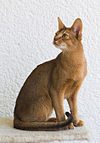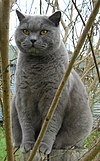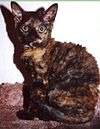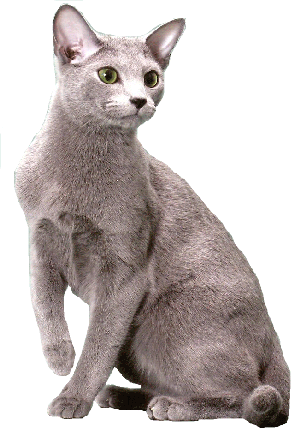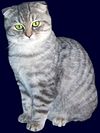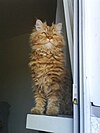The Balinese was originally registered as a "longhaired Siamese", and examples were known from the early 1920s. The occasional long-haired kittens in a Siamese litter were seen as an oddity, and sold as household pets rather than as show cats. This changed in the mid-1950s, when two breeders, Mrs. Marion Dorsey of Rai-Mar Cattery in California and Mrs. Helen Smith of MerryMews Cattery in New York, decided that they would commence a breeding program for the longhaired cats. Helen Smith named the cats "Balinese" because she felt they showed the grace and beauty of Balinese dancers, and because "longhaired Siamese" seemed a rather clunky name for such graceful felines. The breed became quite popular after this, and a number of breeders began working on "perfecting" the Balinese appearance. This led eventually to the development of two entirely separate "strands" of Balinese cat - some owners prefer a traditional or "apple-headed" Balinese, while breeders and judges tend to prefer a more contemporary appearance.
According to "Encyclopedia of Cat Breeds" by J. Anne Helgren 1997 Barron's Educational Series Inc., which has a rating scale on intelligence and other breed traits, the Siamese and Balinese are rated the highest 9-10 on a scale of 1 to 10. The Balinese is rated the highest in intelligence of all the long-haired breeds. Other breeds such a Persians rate a 6, Himalayans 7 and Tonkinese 8.
Balinese tend to live between 18 to 21 years
Like the Siamese, there are now two different varieties of Balinese being bred and shown - "traditional" Balinese and "contemporary" Balinese. The traditional Balinese cat has a coat approximately two inches long over its entire body and it is a sturdy and robust cat with a semi-rounded muzzle and ears. The traditional Balinese closely resembles a Ragdoll cat although they do not share any of the same genes or breeding other than having a partially Siamese ancestry. A "contemporary" Balinese has a much shorter coat and is virtually identical to a standard show Siamese except for its tail, which is a graceful silky plume. Like the Siamese, the Balinese has a long, slim body, wedge-shaped head, and vivid blue eyes. Its soft, ermine-like coat is short in comparison to those of other longhaired cats, and doesn't form a ruff.
Like the Siamese, the Balinese loves attention; it is very playful and fond of human company. The Balinese is a gregarious creature, While they still 'talk' like their Siamese cousins, their voices are far softer and they speak only when they have something they feel is important to say.
In most associations, the Balinese is accepted in a full range of colors, including the four traditional Siamese point colors of seal, blue, chocolate, and lilac, as well as less traditional colors such as red and cream, and patterns such as lynx (tabby) point and tortie point. However, in the Cat Fanciers' Association, the Balinese is only accepted in the four traditional Siamese colors; all other colors and patterns are considered Javanese.












